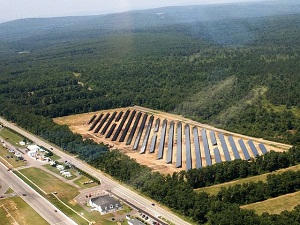Belectric, Smart Energy partner for utility-scale solar projects
 While the U.S. southwest, parts of China and elsewhere in the world are riddled with gigantic utility-scale solar projects, many are still in the planning phase or are in litigation of some sort. Meanwhile, more and more projects in the smaller utility-scale arena—between 10 megawatts and 30 MWs, continue to be built. That’s the market that a new partnership between Belectric, Inc., and Smart Energy Capital, LLC, is targeting.
While the U.S. southwest, parts of China and elsewhere in the world are riddled with gigantic utility-scale solar projects, many are still in the planning phase or are in litigation of some sort. Meanwhile, more and more projects in the smaller utility-scale arena—between 10 megawatts and 30 MWs, continue to be built. That’s the market that a new partnership between Belectric, Inc., and Smart Energy Capital, LLC, is targeting.
The companies recently completed a 30-MW project together in Sacramento, Calif., a project for which Belectric developed and Smart Energy structured the financial arrangements.
The project was sold to Constellation Energy, and the power is being sold through the Sacramento Municipal Utility District’s (SMUD) feed-in tariff program. It’s the type of arrangement the two companies will likely pursue going forward.
However, the companies haven’t announced any new projects yet, said David Taggart, president of Belectric’s U.S. operations. .
In the U.S., the company is looking at developing projects in multiple states, mainly, California, New Jersey and New Mexico, Taggart said.
“We also have some interest in Georgia and Massachusetts,” he said.
But don’t expect them to announce projects like the 250-MW California Valley Solar Ranch being developed by SunPower and NRG energy.
“We generally are focusing on 20 megawatts or less because we can move much quicker on those projects,” Taggart said.
The companies are focused on that market because they are confident they can execute those projects quickly and it can build investor confidence.
“Our focus is on that: trying to build confidence in the investor base,” Taggart said. A lot of the larger-scale projects aren’t being built today, which could scare off potential investors. “That’s what they need to see, things being built.”
The companies may pursue some projects as small as 1 megawatt.
“If we can make projects economically viable all the way down to 1 megawatt, we can certainly make them viable at 30 megawatts to 100 megawatts,” Taggart said.
The companies will focus on photovoltaic installations as opposed to solar thermal or concentrating photovoltaics. But other than that they are not technology specific, according to Taggart.
“If you look at solar thermal, most of the cost is the cost of the pieces,” he said. “Everything we’re looking at is ground-mounted, utility-grade power plants, largely because of our combined passion to get solar power on the grid and do it as quickly as possible.”
Pictured: Belectric's Pocono project.



